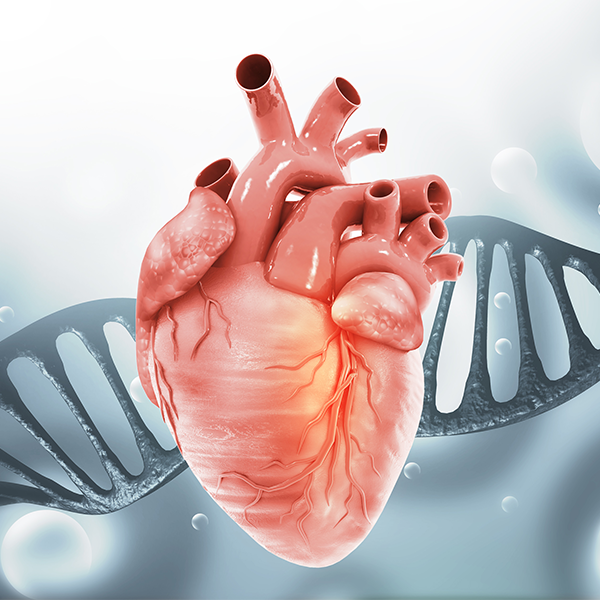-
5 things to know about fainting: The heart’s role and when it may signal a serious condition

February is Heart Month in many countries
LONDON — You may have heard that people who feel faint should sit with their heads between their knees, but is that true? And how can you tell whether you or someone else who has fainted should go to the emergency department or perhaps even see a cardiologist? Elijah Behr, M.D., a cardiologist at Mayo Clinic Healthcare in London, explains five things it is important to know about fainting.
Fainting or blacking out, also known as syncope, is a temporary loss of consciousness due to insufficient blood flow to the brain.
There are different types of syncope
Vasovagal syncope is the medical term for the most benign kind of fainting, simple fainting without a serious underlying cause, Dr. Behr explains. This type of fainting is common.
"In some people, if they have a drop in blood pressure from emotional distress, pain, illness or dehydration, for example, or just generally have a low blood pressure, any provocation causes a reflex in the heart," Dr. Behr says. "Rather than the heart speeding up and pumping more forcefully to maintain the blood pressure, it starts to slow down. The blood pressure drops, the heart rate slows further, and the heart can pause for many seconds; sometimes close to a minute for some people who have more severe fainting episodes."
Usually with this type of fainting, the person falls to the floor, blood pressure returns to the brain and the person starts to recover. However, if someone faints in a vulnerable location or vulnerable position, it can be dangerous to that person and others, Dr. Behr notes.
The syncope that most concerns healthcare professionals is cardiac syncope, blacking out due to an underlying heart disease such as a heart rhythm abnormality, or arrhythmia, he explains.
"This is usually a more abrupt loss and return of consciousness than in simple fainting. If you're older, you're more likely to have underlying heart disease that you may or may not be aware of. That's one of the reasons to be more concerned about loss of consciousness in older individuals," Dr. Behr says. "Young people can also have heart diseases that can cause cardiac syncope that may be a warning sign of something more serious to come, so it is important to investigate it."
Others for whom a blackout can be a warning sign of a serious heart problem include people with a family history of inherited heart problems, unexplained deaths or premature sudden deaths; people whose fainting is related to exercise; and people whose fainting is associated with heart palpitations or the heart feeling like it's racing away, he adds.
Before a simple faint, you might experience one or more signs that you should sit or lie down
"There will be a sensation of lightheadedness. There may be a sensation of nausea or buzzing or ringing in the ears," Dr. Behr says. "Some people describe tunnel vision — their vision closing in on them before they actually pass out — and some may actually lose vision but still be aware, not lose consciousness completely, and then recover. Other typical signs include feeling sweaty and clammy."
Some people get about a half-hour of warnings before fainting; some people may get 30 seconds, he adds.
What to do if you faint or someone else does:
- Check that the person is breathing and has a pulse. If not, call for emergency help, and if you know how to provide cardiopulmonary resuscitation, initiate it.
- If the person is still breathing and has a pulse, ensure they are lying flat, and their airway is open using the recovery position and call for help.
- If you feel like a faint may be coming on, position your head lower than your heart: for example, between the knees.
- Rest after coming out of the faint.
- Drink water after the faint, adding electrolytes if you have them.
"If your blood pressure is getting low and you're getting those symptoms, it means the blood doesn't get into your brain, and if your heart is trying to push the blood to your brain against gravity, then it's struggling. You really need to get your head level or below your heart so the blood pressure gets back to the brain, and that will avert all the symptoms and the vicious cycle that ensues," Dr. Behr advises. "Get your head between your knees or lie down and put your head down and your feet up in the air, depending on where you are and what is feasible to do."
Getting up and walking around straight away is probably the worst thing to do, he warns.
"Your blood pressure will drop further, and you’ll feel worse, and collapse and fall and injure yourself," Dr. Behr says. "The best thing is to stay where you are and get flat, and when you're feeling better, drink some water, maybe with some electrolytes if you're dehydrated. For general preventive measures, we advise most people who have fainted to drink more water and to sometimes add a bit of salt to their food, because generally they're running a low blood pressure."
Sometimes, getting hydrated and adding salt to the diet may not be enough. Occasionally people need to take medications to improve blood pressure control and increase blood pressure to prevent fainting episodes, Dr. Behr says.
When to seek medical help
"If somebody has had simple fainting with the clear precipitants that I described, it is best to have a chat with your GP (your primary care physician) to talk about it. Particularly if it's a first onset of symptoms, it's best not to ignore it," Dr. Behr says. "Often people go to the emergency department after a first faint, which I think is very fair to do and I would encourage."
If someone has had simple faints before, the circumstances that bring them on are typical for them and they have been evaluated by their primary care physician or a cardiologist before, they may not need to go to the emergency department every time, he adds.
The more concerning situations are older people having faints where other conditions may also be having an effect, people who are having recurrent faints despite keeping well hydrated, if there has been an injury due to a faint, and if the blackout comes on abruptly and with other signs that there may be an underlying cardiac condition.
"We need to make sure that they are treated and that something else isn't being missed," Dr. Behr says. "Also, sometimes faints can look like seizures. They can cause fitting activity, and differentiating a seizure and epilepsy from fainting requires involvement of a cardiologist and neurologist."
If you faint at the sight of blood, you may be able to condition yourself not to
"It's very common, but it can be surmounted by various means," Dr. Behr says.
For example, cognitive behavioural therapy (CBT) may help, he suggests. In CBT, you work with a mental health counselor such as a psychotherapist or therapist to become aware of inaccurate or negative thinking, so you can view challenging situations more clearly and respond to them more effectively.
###
About Mayo Clinic Healthcare
Mayo Clinic Healthcare, located in London, is a wholly owned subsidiary of Mayo Clinic, a not-for-profit academic medical center. Mayo Clinic is top ranked by U.S. News & World Report in more specialties than any other hospital for a reason: quality of care. Mayo Clinic Healthcare is the U.K.'s front door to that unparalleled experience. Visit Mayo Clinic Healthcare for more information.
Media contact:
- Sharon Theimer, Mayo Clinic Communications, newsbureau@mayo.edu
Related Articles







